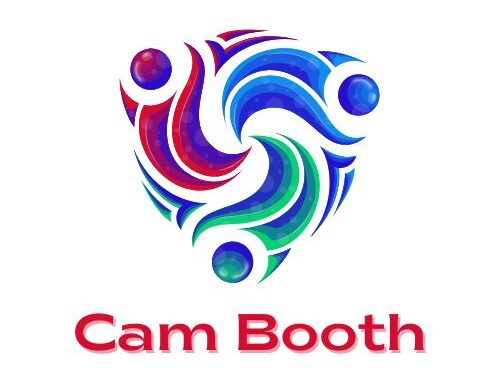Basketball is more than just a sport; it’s a community, a culture, and a way of life for millions around the globe. As the game continues to evolve, so does our understanding of how to make it more sustainable. In this blog post, we will explore key concepts related to sustainability in basketball, including energy conservation, waste reduction, sustainable food choices, and eco-friendly transportation. These basketball keywords will not only enhance your game but also contribute to a healthier planet.
1. Energy Conservation: Powering the Game Responsibly
Energy conservation is a fundamental aspect of sustainability that often gets overlooked in the world of sports. In basketball, energy is consumed in various ways—from the lights illuminating the court to the heating and cooling systems in arenas. By adopting energy-efficient practices, teams and fans can significantly reduce their carbon footprint.
Understanding Energy Consumption in Basketball
Basketball arenas are typically large structures that require substantial energy to operate. From the moment the lights flicker on for a practice session to the final buzzer of a championship game, energy consumption is at an all-time high. Understanding where this energy goes is the first step in making meaningful changes.
- Lighting: Traditional incandescent bulbs are being replaced by LED lights, which use up to 75% less energy.
- Heating and Cooling: Advanced HVAC systems can optimize energy use, ensuring that arenas are comfortable without wasting resources.
- Equipment: The introduction of energy-efficient scoreboards and sound systems can also contribute to lower energy consumption.
Practical Steps for Energy Conservation
- Switch to LED Lighting: Encourage your local gym or community center to invest in LED lights. Not only do they save energy, but they also last longer, reducing maintenance costs.
- Utilize Smart Technology: Smart thermostats can adjust temperature settings based on occupancy, ensuring that energy isn’t wasted when the arena is empty.
- Engage Fans and Players: Create awareness campaigns that educate fans and players about the importance of energy conservation. Simple actions, like turning off lights when leaving a room or unplugging devices, can add up over time.
The Impact of Energy Conservation
Implementing energy conservation strategies can lead to significant cost savings for teams and arenas. Moreover, by reducing energy consumption, basketball organizations can contribute to a more sustainable future, aligning with the growing global emphasis on environmental responsibility.
2. Waste Reduction: Playing Clean on and off the Court
Waste reduction is another critical aspect of sustainability in basketball. With thousands of fans attending games and numerous events taking place throughout the season, the amount of waste generated can be staggering. However, there are effective strategies to minimize this impact.
Understanding Waste Generation in Basketball
The waste generated during basketball events can come from various sources, including:
- Food and Beverage Packaging: Single-use plastics and food containers contribute significantly to landfill waste.
- Merchandise: The production of team merchandise often leads to excess inventory and packaging waste.
- Event Materials: Banners, flyers, and promotional materials can add to the waste pile if not managed properly.
Strategies for Waste Reduction
- Implement Recycling Programs: Work with local waste management companies to set up recycling stations at games and events. Make recycling easy and accessible for fans.
- Go Digital: Reduce paper waste by transitioning to digital tickets and programs. Encourage fans to use mobile apps for updates and information.
- Food Waste Initiatives: Partner with local food banks to donate leftover food from games. This not only reduces waste but also supports the community.
The Benefits of Waste Reduction
By focusing on waste reduction, basketball teams can not only lessen their environmental impact but also lead by example. Fans appreciate organizations that take a stand on sustainability, fostering a sense of community and loyalty. Additionally, reducing waste can lead to cost savings in waste disposal and management.
3. Sustainable Food Choices: Fueling the Game Responsibly
Food is an integral part of the basketball experience, whether it’s a hot dog at the arena or a post-game meal with friends. However, the environmental impact of food choices can be significant. By promoting sustainable food options, basketball organizations can encourage healthier lifestyles and reduce their carbon footprint.
Understanding Sustainable Food Choices
Sustainable food choices encompass a range of practices, including:
- Locally Sourced Ingredients: Supporting local farmers and producers reduces transportation emissions and supports the local economy.
- Organic and Seasonal Foods: Choosing organic foods helps reduce pesticide use and promotes biodiversity.
- Plant-Based Options: Offering more plant-based meal options can significantly lower the carbon footprint of food served at games.
Implementing Sustainable Food Practices
- Menu Overhaul: Work with vendors to create a menu that emphasizes local and organic ingredients. Highlight plant-based options as a healthier alternative.
- Educate Fans: Use signage and social media to inform fans about the benefits of sustainable food choices. Share stories about local farmers and producers.
- Food Waste Management: Implement composting programs for food waste generated at games. This not only reduces landfill waste but also creates valuable compost for local gardens.
The Impact of Sustainable Food Choices
By prioritizing sustainable food options, basketball teams can significantly reduce their environmental impact while enhancing the fan experience. Fans are increasingly seeking healthier and more environmentally friendly options, and teams that cater to this demand will likely see increased patronage.
4. Eco-Friendly Transportation: Getting to the Game Sustainably
Transportation is a significant contributor to greenhouse gas emissions, particularly in the context of large events like basketball games. Encouraging eco-friendly transportation options can help reduce this impact and promote a culture of sustainability.
Understanding Transportation Emissions
Transportation emissions stem from various sources, including:
- Personal Vehicles: Many fans drive alone to games, contributing to traffic congestion and emissions.
- Team Travel: The carbon footprint of team travel for away games can be substantial, particularly if flights are involved.
Strategies for Promoting Eco-Friendly Transportation
- Carpooling Initiatives: Encourage fans to carpool to games by offering incentives, such as priority parking for carpool vehicles.
- Public Transportation Partnerships: Work with local transit authorities to provide special game-day transportation options, such as shuttle buses or discounted fares.
- Bike Racks and Walking Paths: Promote biking and walking by providing secure bike racks and creating safe walking paths to the arena.
The Benefits of Eco-Friendly Transportation
Promoting eco-friendly transportation not only reduces emissions but also enhances the overall experience for fans. Less traffic congestion means easier access to games and a more enjoyable atmosphere. Additionally, by demonstrating a commitment to sustainability, basketball organizations can strengthen their brand and attract environmentally conscious fans.
Conclusion: The Future of Basketball and Sustainability
As the world becomes increasingly aware of the need for sustainability, basketball organizations have a unique opportunity to lead the way. By focusing on energy conservation, waste reduction, sustainable food choices, and eco-friendly transportation, teams can create a more sustainable future for the sport and the planet.
The integration of these basketball keywords into the culture of the game not only benefits the environment but also resonates with fans. As more individuals become aware of their impact on the planet, they will gravitate towards organizations that prioritize sustainability.
In conclusion, the future of basketball lies in the hands of those who are willing to embrace change. By adopting sustainable practices, we can ensure that the game we love continues to thrive for generations to come. It’s time to take action, both on and off the court, and make sustainability a key part of our basketball playbook. Whether you’re a player, coach, fan, or organization, there’s a role for everyone in this important movement. Let’s dribble towards a more sustainable future together!











